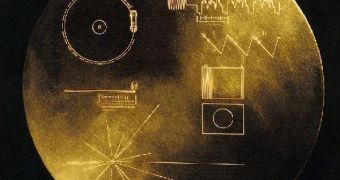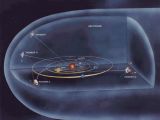The four "STAR" rocket stages are the boosters that made it possible for probes like Voyager 1, Voyager 2 and Pioneer 10 to defeat the Earth's gravity and lift into space.
Now, the two Voyager spacecraft continue to operate, carrying with them a golden record that contains pictures and sounds of Earth, along with symbolic directions for playing the record and data detailing the location of Earth.
But they were also carrying a more "alive" testimony of life on Earth.
The previously mentioned booster rockets were vital to the success of the mission, but soon after launch, they detached and are still supposed to be floating out there and on course to move beyond the sun's influence into interstellar space.
There's one minor problem: they carry lots of terrestrial bacteria that were not removed through sterilization and may have survived the trip.
"The upper stages were not required to be sterilized," said John Rummel, senior scientist for astrobiology at NASA. There was just one big directive: "Their requirement was not to hit any of the planets in our solar system," a caution necessary since the rocket stages would almost certainly play host to large numbers of Earthly bacteria.
These bacteria were deposited by the engineers and workers who built the upper stages, through breath and touch and are now traveling out of the solar system at speeds of between 7 and 11 miles per second, if they're still alive.
"Survival is more likely than any 'thriving,'" said Mark Burchell of the University of Kent in the UK and could the extreme cold have forced them to go into a hibernation state, called spore state, until they find more suitable environments?
For the moment, the rockets have not yet passed near a star that could have awakened the sleeping bacteria, but the Voyager 1 has many billions of years of travel ahead, so the possibility of encountering a suitable environment for the bacteria to get back to life is not completely out of the question.

 14 DAY TRIAL //
14 DAY TRIAL // 
